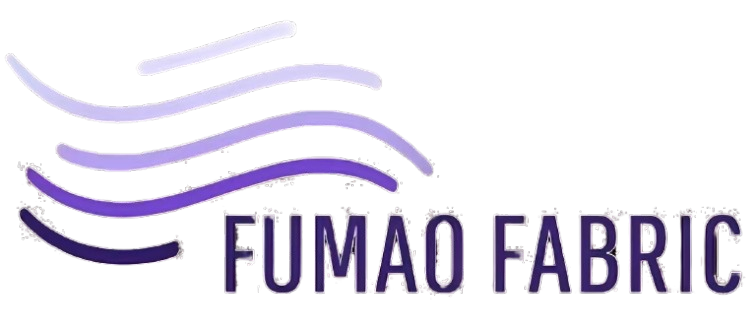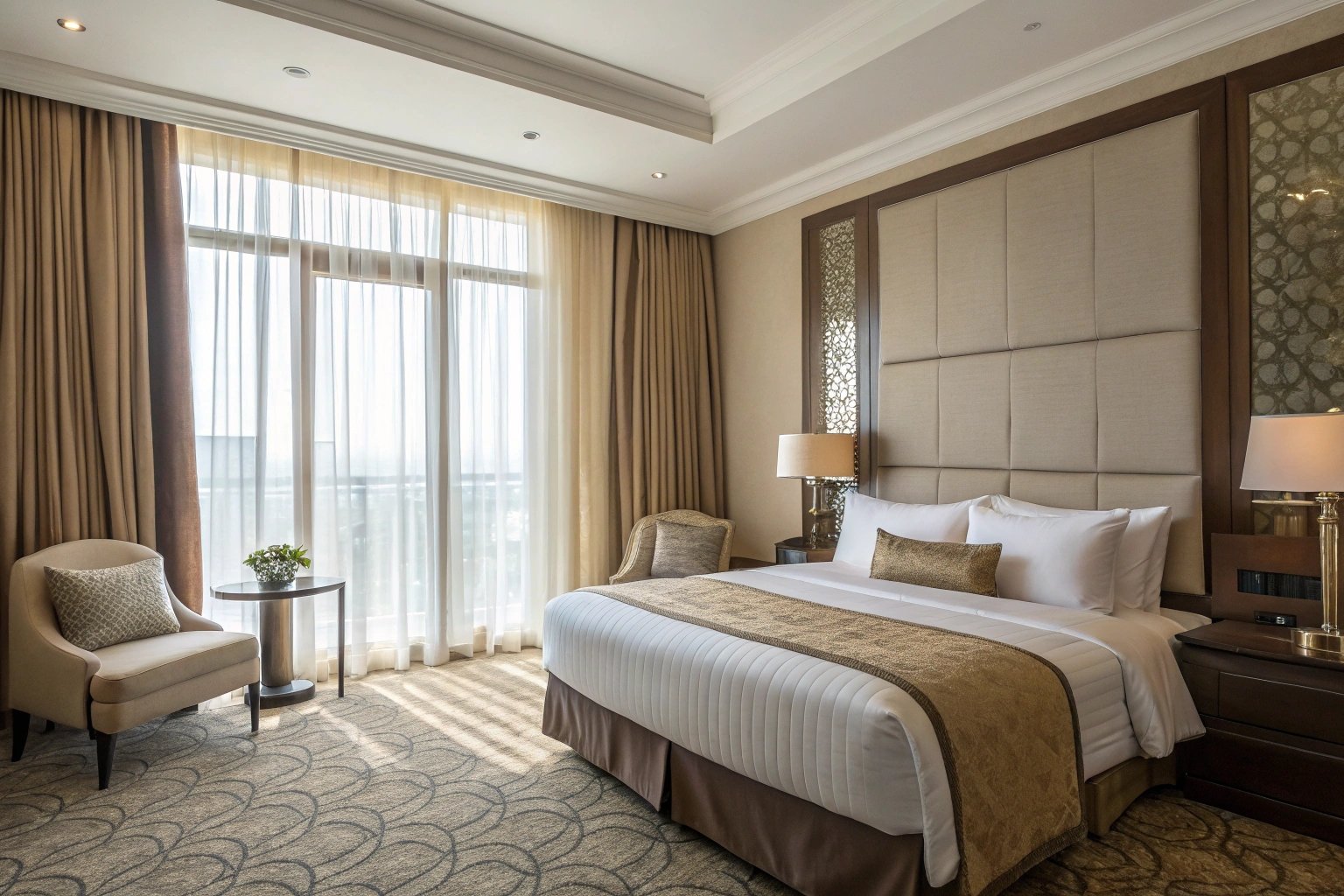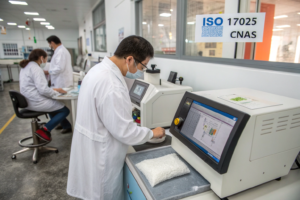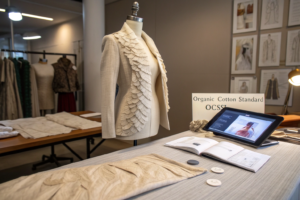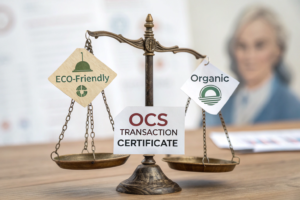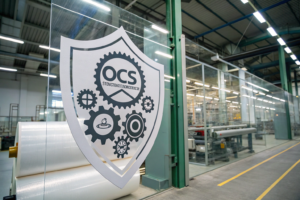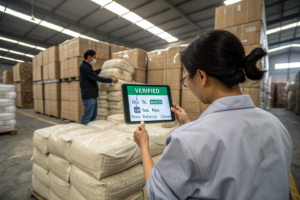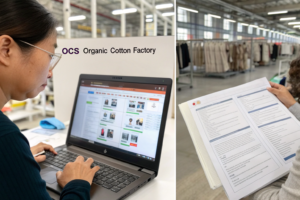Maintaining immaculate textiles in hospitality spaces is more than a visual necessity—it’s a hygiene and branding imperative. Whether it’s a luxury resort or an airport lounge, constant use of fabric surfaces means regular exposure to spills, stains, and environmental dirt. But daily laundering at high temperatures can degrade fabric quality and inflate maintenance costs.
Soil-release treated fabrics offer a smart solution. They repel stains, simplify laundering, and preserve the appearance and feel of bedding, drapery, uniforms, and more.
This article dives into the most effective fabric technologies used in hospitality—from polyester blends with hydrophilic coatings to innovative dual-action stain release systems. At Fumao Fabric, we supply durable, stylish, and easy-to-clean fabrics to global hotel groups, cruise liners, and boutique property designers alike.
Why Are Soil-Release Finishes Essential in Hospitality?
First impressions are everything in the hospitality industry.
From crisp white linens to spotless upholstery, cleanliness drives guest satisfaction. However, fabrics in these settings are exposed to everything—wine spills, makeup smudges, food stains, body oils. Traditional laundering can’t always eliminate these, especially from synthetics.
Soil-release finishes enhance fabric performance by allowing stains to lift off easily during standard washing cycles, reducing replacement rates and maintaining aesthetic quality.
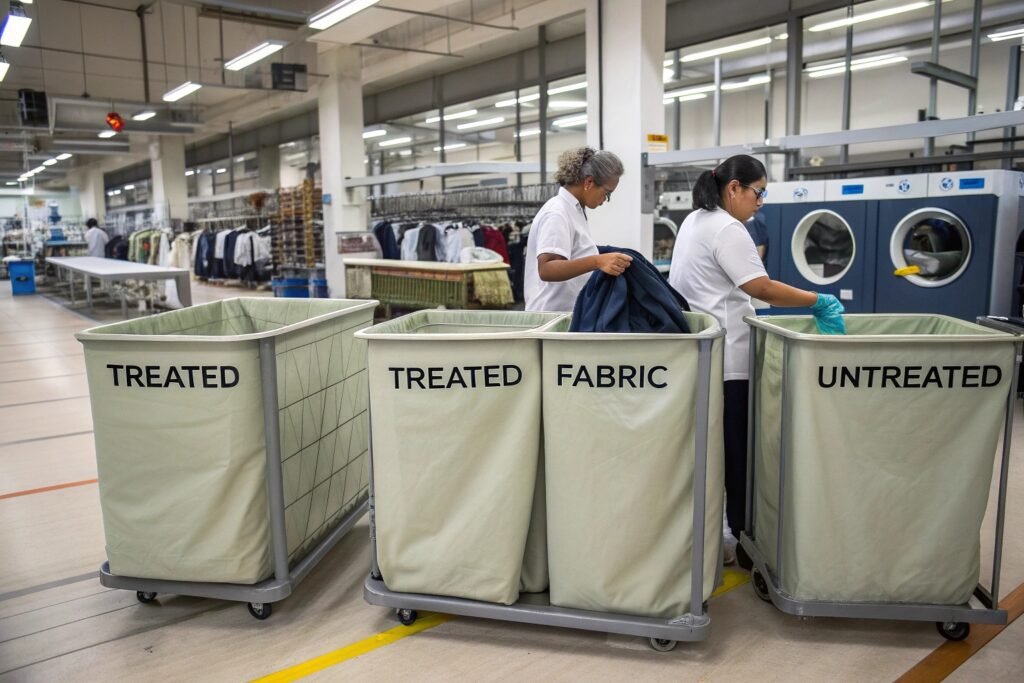
What Types of Fabrics Require Soil-Release Finishes Most?
In hospitality, key fabric applications include:
| Fabric Use | Common Material | Benefit of Soil-Release Treatment |
|---|---|---|
| Bedding & Linens | Cotton-poly blends | Prevents oil & sweat stains |
| Drapes & Sheers | Polyester | Resists dust, mold, & food smudges |
| Upholstery | Olefin, FR polyester | Easy-to-clean seating surfaces |
| Uniforms | Twill, poplin blends | Stays professional longer |
For these applications, treatments like Teflon™ fabric protector and Soil Release Polymer Technology improve durability without compromising softness or hand feel.
How Do Soil-Release Finishes Work?
These finishes modify the surface tension of fibers. Most synthetics like polyester are hydrophobic and naturally attract oily residues. A hydrophilic finish makes it easier for water and detergent to penetrate and lift stains.
Some treatments also create anti-redeposition barriers—so once the stain is removed, it doesn’t migrate back during rinsing. We often use dual-action finishes combining fluorocarbon and nonionic components.
At Fumao, our lab-tested finishing ensures fabric pH balance and fiber bonding compatibility, resulting in performance without harsh chemical feel.
Which Fabric Blends Perform Best With Soil-Release Technology?
Choosing the right base fabric is as important as the finish.
While cotton is naturally breathable and absorbent, it doesn’t hold soil-release treatments well on its own. That’s why polyester-rich blends dominate hospitality textiles. These synthetics offer superior wrinkle resistance and durability, while advanced chemical bonding allows deep finish penetration.
Blended fabrics—especially polyester-cotton and polyester-rayon—deliver the best combination of softness, resilience, and soil-release treatment performance.
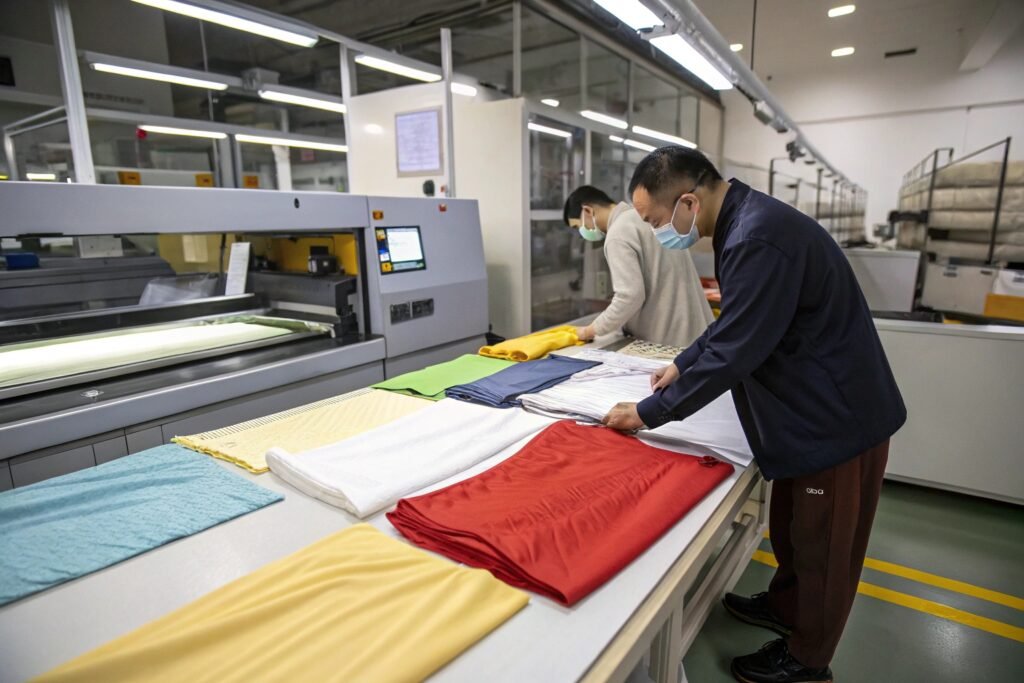
Why Are Poly-Cotton Blends a Top Choice?
Poly-cotton (typically 65/35 or 80/20) is a mainstay in hotel sheeting and pillowcases. It balances the cooling breathability of cotton with the strength and wash-durability of polyester.
When treated with soil-release finishes, these blends retain a crisp look across dozens of washes, even under industrial laundry conditions. Our OEKO-TEX certified treatments ensure safety for skin contact.
We've shipped these blends for high-occupancy chains across North America, with customizations in GSM, weave density, and finish level—supporting both budget and premium-tier hotels.
How Do Performance Polyesters Enhance Cleaning Efficiency?
100% polyester has long been considered hard to clean due to its hydrophobic nature. But when coated with hydrophilic soil-release polymers, polyester offers unmatched stain resistance.
These fabrics are ideal for high-use areas like banquet chair covers, lounge cushions, and cruise ship drapery. Our clients often request antimicrobial + soil-release dual finishes, especially post-pandemic, to reduce cross-contamination risks.
We engineer weaves like dobby and jacquard to visually mask minor stains, further enhancing real-world usability.
How Can Soil-Release Finishes Improve Staff Uniforms?
Uniforms are the front line of guest perception.
Whether it’s a server at a gala event or a concierge at a business hotel, their uniforms need to stay clean, breathable, and presentable. Yet these garments are under constant physical strain, exposure to food, and repeated hot washing.
Soil-release treated uniforms extend garment life, maintain visual appeal, and reduce laundering frequency, lowering operational costs for hospitality brands.
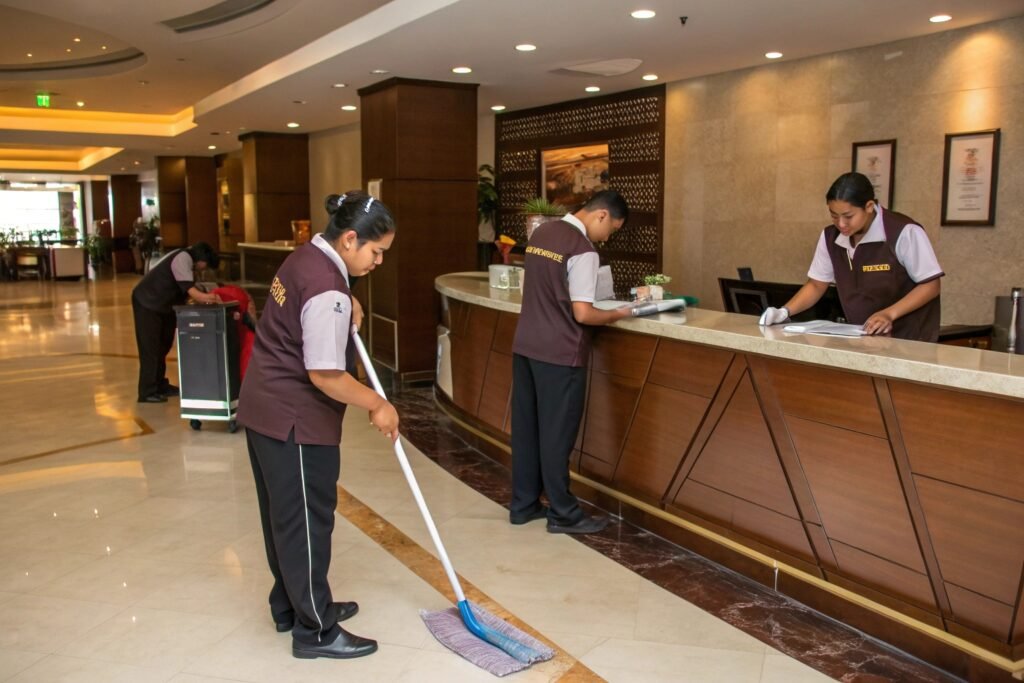
What Fabrics Are Common in Treated Uniforms?
Most hospitality uniforms are made from:
- Twill polyester (easy care, wrinkle-resistant)
- Stretch poplin blends (movement-friendly)
- Poly-viscose (drapey and soft)
- Gabardine for structured looks
We apply customized finishes at our coating facility in Keqiao, integrating water/oil repellency with soil-release agents to balance comfort and performance.
Uniforms for F&B staff often include stain-release bar tacking in high-contact areas like collars and cuffs.
Are There Eco-Friendly Options for Uniform Finishes?
Yes. Many buyers now ask for PFC-free or biodegradable soil-release finishes. We offer finishes based on sustainable chemistry aligned with EU REACH standards.
Our team has also developed recycled polyester fabrics treated with plant-derived soil-release coatings for boutique eco-resorts and LEED-certified hotels. These maintain performance while supporting green branding.
Some chains even require documentation of wash cycles vs performance retention, which we supply through internal lab testing reports.
What Testing and Certification Ensure Finish Effectiveness?
Without testing, performance claims mean little.
Hospitality buyers depend on proven results—whether it’s stain lift ratios or durability across 50+ washes. That’s why third-party testing and certification is a key part of our value proposition at Fumao Fabric.
Reliable soil-release fabrics are backed by certified lab results, durability testing, and international standards compliance.
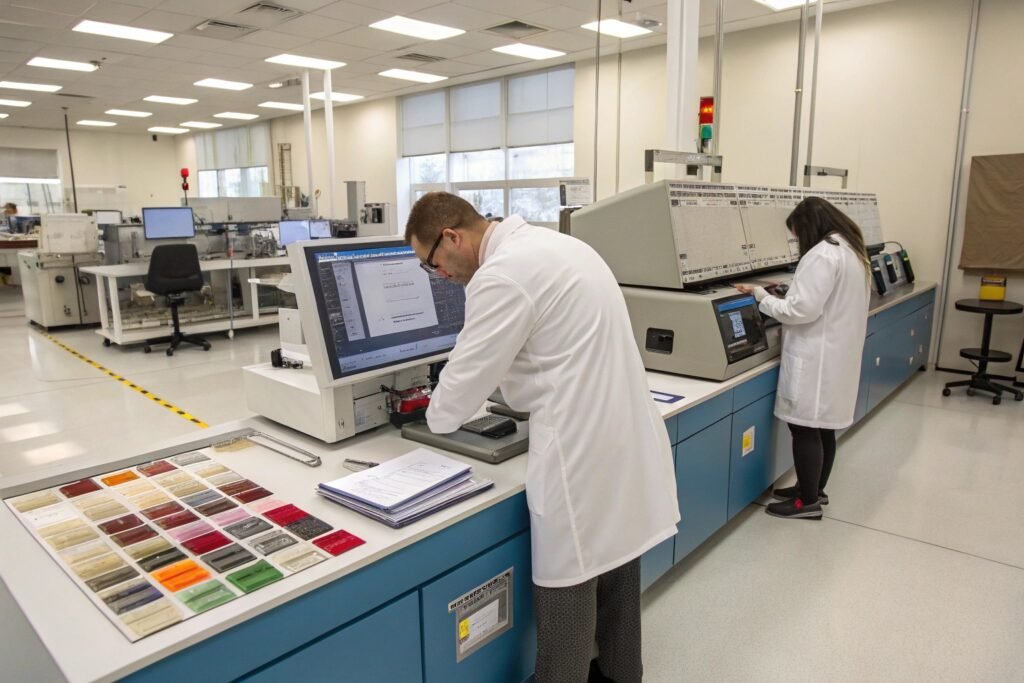
What Are the Standard Tests for Soil-Release?
The most recognized benchmarks include:
- AATCC 130: Measures stain removal post laundering.
- ASTM D1308: Evaluates stain resistance on untreated and treated surfaces.
- ISO 105-C06: Colorfastness to washing.
Our CNAS-accredited lab in Zhejiang conducts all these tests. We also track GSM consistency, finish adhesion, and stretch impact to ensure long-term performance.
Buyers receive detailed quality reports, along with physical swatches post-laundering for visual inspection.
How Many Washes Do These Treatments Last?
A good soil-release finish should last at least 25 industrial washes. Our premium finishes retain 80–90% performance after 50 washes, depending on fabric type and wash parameters.
We provide clients with care labels, laundering guides, and chemical compatibility instructions to extend lifespan. For uniforms, we recommend mid-temperature commercial wash cycles with non-abrasive detergents.
Our ERP system links treatment batches to each order, ensuring full traceability in case of performance audit or reordering.
Conclusion
Soil-release treated fabrics are no longer a luxury—they’re a necessity for modern hospitality. They help maintain a pristine brand image, extend textile lifespan, and reduce cleaning costs without sacrificing design or comfort.
At Fumao Fabric, we don’t just offer treated fabrics—we engineer solutions for high-traffic, stain-prone environments with tested performance and full customization. Whether you're outfitting a five-star resort, a budget chain, or a cruise line fleet, our soil-release options offer long-term value and lasting impressions.
